INFOGRAPHIC: Why large litters could mean higher mortality


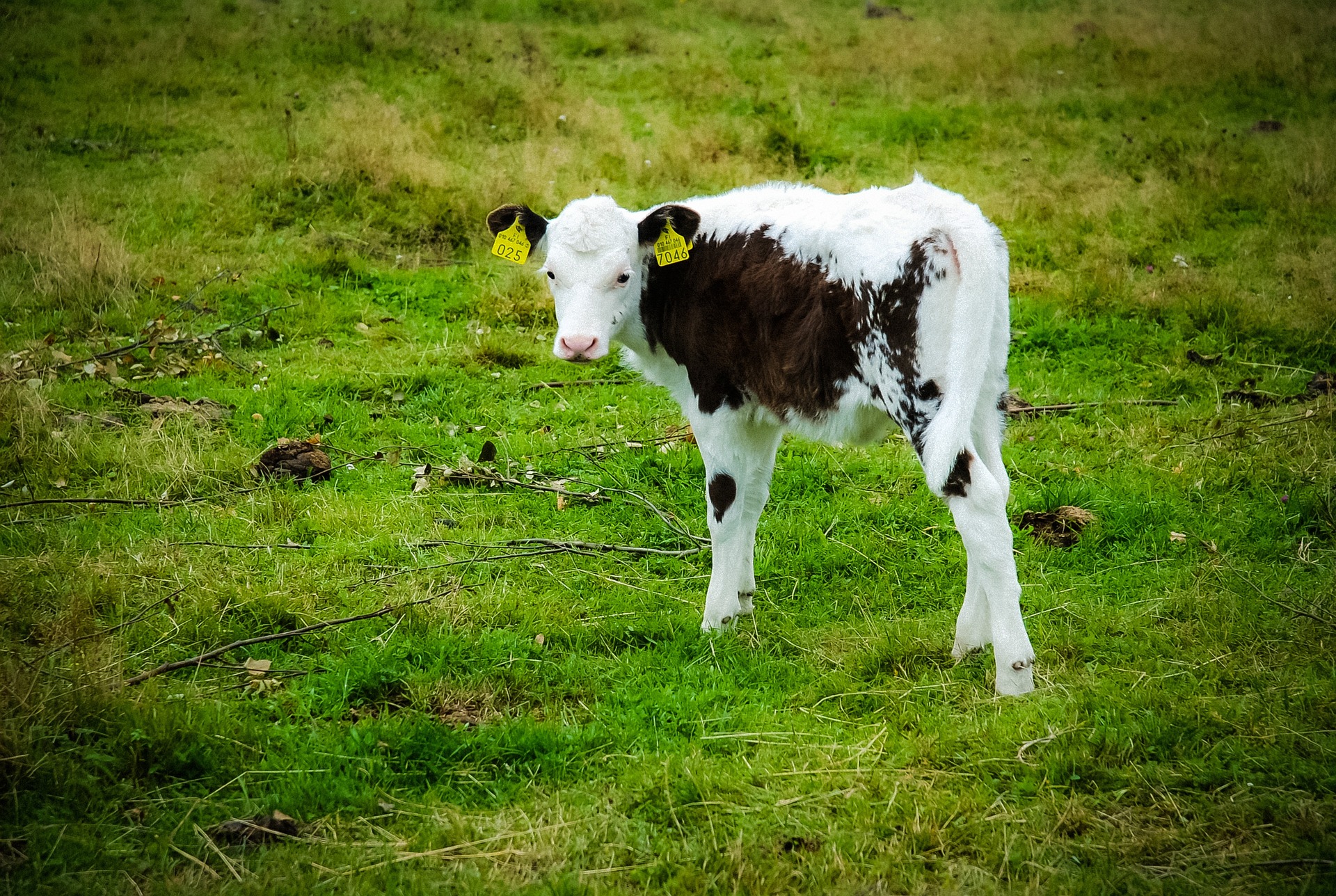
By Dr. Inge Heinzl, Editor, EW Nutrition
Diarrhea causes a higher workload, increased costs for treatment, losses, and, of course, lower benefits for the farmer. But not all diarrheas are equal. How do they differ, where do differences come from, and what can you do to protect your animals?
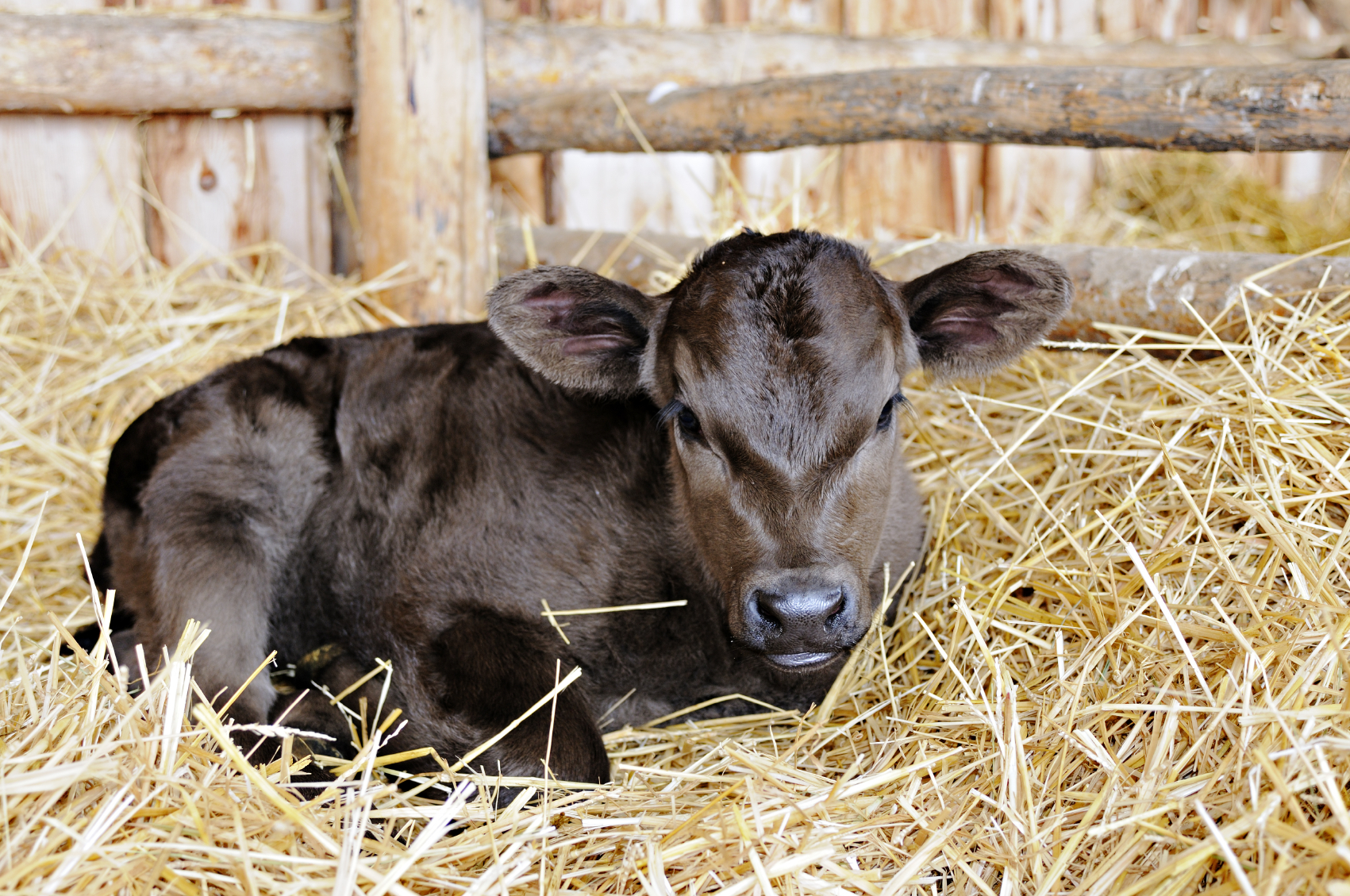
In general, diarrhea is characterized by more liquid being secreted than being resorbed. However, diarrhea is not a disease but only a symptom. Diarrhea has a protective function for the organism: the higher liquid volume in the gut increases motility, and pathogens and toxins are more readily excreted.
Diarrhea can occur for several reasons. It can result from inadequate nutrition but also the reaction to an infection by pathogens such as bacteria, viruses, and protozoa.
Depending on how the accumulation of fluid in the gut is generated, there are different kinds of diarrhea:
Due to multiple infections, diarrhea often is a mixture of different forms.
For the occurrence of diarrhea, different causers can be a possibility. Besides infectious pathogens, also the feed must be considered.
E. coli is a common agent of the gut microflora and in general it is harmless. However, E. coli can also be the cause of different types of diarrhea, depending on the virulence factors. Virulence factors of E.coli are, e.g., fimbria for the attachment to intestinal receptors or the ability to produce toxins influencing the secretion of ions and liquids. Example: enterotoxic E. coli (ETEC) F5 and F41 occurring during the first days of life.
In general, Salmonella plays a secondary role in calf diarrhea. Of the Salmonella serovars, mainly S. Typhimurium and S. Dublin are found in calves. Salmonella produces enterotoxins that attack the intestinal wall.
Clostridia infections belong to the most expensive ones in cattle farming globally. In herbivores, clostridia are part of the normal flora of the gastrointestinal tract; only a few types can cause severe disease. In calves, the necrotizing toxin-producing Clostridium perfringens can lead to enterotoxaemia manifesting in acute bloody diarrhea.
Rotavirus, which occurs mainly during the 5th -15th day of life, is the most common viral pathogen causing diarrhea in calves and lambs. If more enterocytes are destroyed than regenerated by the organism, the resorption surface in the gut decreases. With increasing age, animals develop immunity against this pathogen.
Coronavirus usually attacks calves at the age of 5 – 21 days (mainly correlated with the decreasing concentration of antibodies in maternal milk). They cause similar lesions in the intestine as rotavirus but additionally lead to necrosis of the crypts in the large intestine. The digestive and absorptive function is lost, resulting in reduced reabsorption of fluids. 3 to 20 % of diarrhea arising in calves is caused by Coronavirus.
Cryptosporidium parvum (mainly 1-2 weeks after birth) belongs to the coccidia and is presumed to be the most common pathogen to cause diarrhea (prevalence up to more than 60 %) in calves. Cryptosporidium is transmitted via oocysts found in feces and on the farm equipment. Cryptosporidia destroy the microvilli in the gut, the function of the gut mucosa is reduced, the resorption area decreases. Consequence: loss of enzyme activity and, therefore, an insufficient breakdown of sugar and protein, resulting in malabsorption.
In general, raw materials which cannot be well digested by the calf (mainly soya products, often used in milk replacers) or which cause allergy can cause diarrhea in calves. Also, antibiotics can lead to an imbalance of the intestinal flora, destruction of the villi, and malabsorptive diarrhea.
A field study with the egg powder-based product Globigen Dia Stop was conducted with 16 calves suffering from diarrhea. They were fed twice daily 50 g of Globigen Dia Stop stirred into the milk replacer.
Result (fig. 1): already one day after the first application of Globigen Dia Stop, 50 % of the calves recovered. After seven days, all calves overcame diarrhea. On average, one calf needed 2,4 treatments to show a full recovery from diarrhea (≙ 1,25 treatment days).
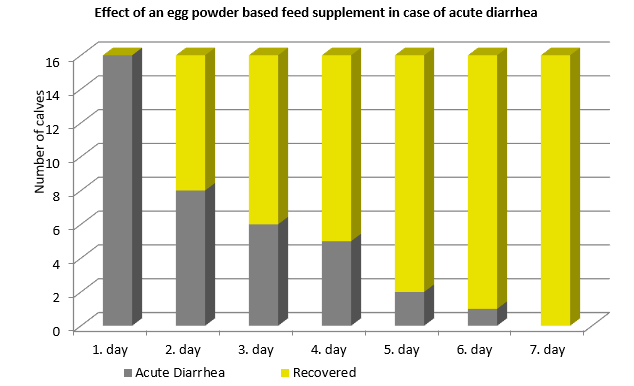
Egg immunoglobulins can effectively support calves in their fight against diarrhea. Immunoglobulins can act against bacteria, parasites, and viruses, not only against bacteria as antibiotics do. With egg immunoglobulin-based products, the farmer has a tool at his disposal that is easy to handle and does not require a withdrawal period. As there is no danger of the generation of resistance, these products are ideal for reducing the use of antibiotics in animal production.
Article initially published in NutriNews
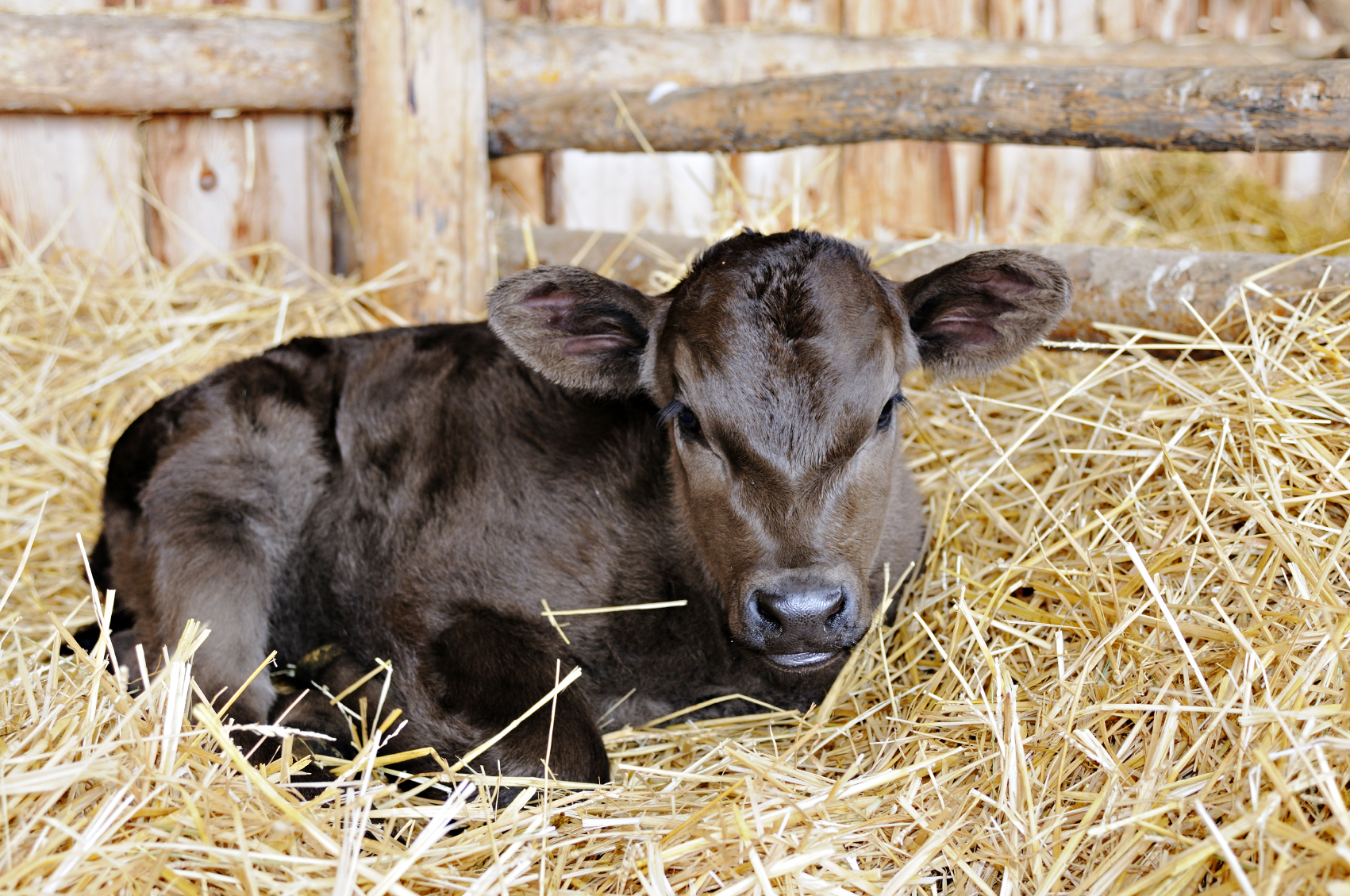
By Lea Poppe, Technical Manager – Europe, EW Nutrition
Humans and animals protect themselves against diseases with specific antibodies (immunoglobulins). They receive antibodies from their mother or a vaccination (passive immunity) or produce them themselves after contact with a pathogen (active immunity). To be protected by a high passive immunity during the first weeks of life, a calf must receive high-quality colostrum with a sufficient amount of farm-specific antibodies as early as possible after birth.
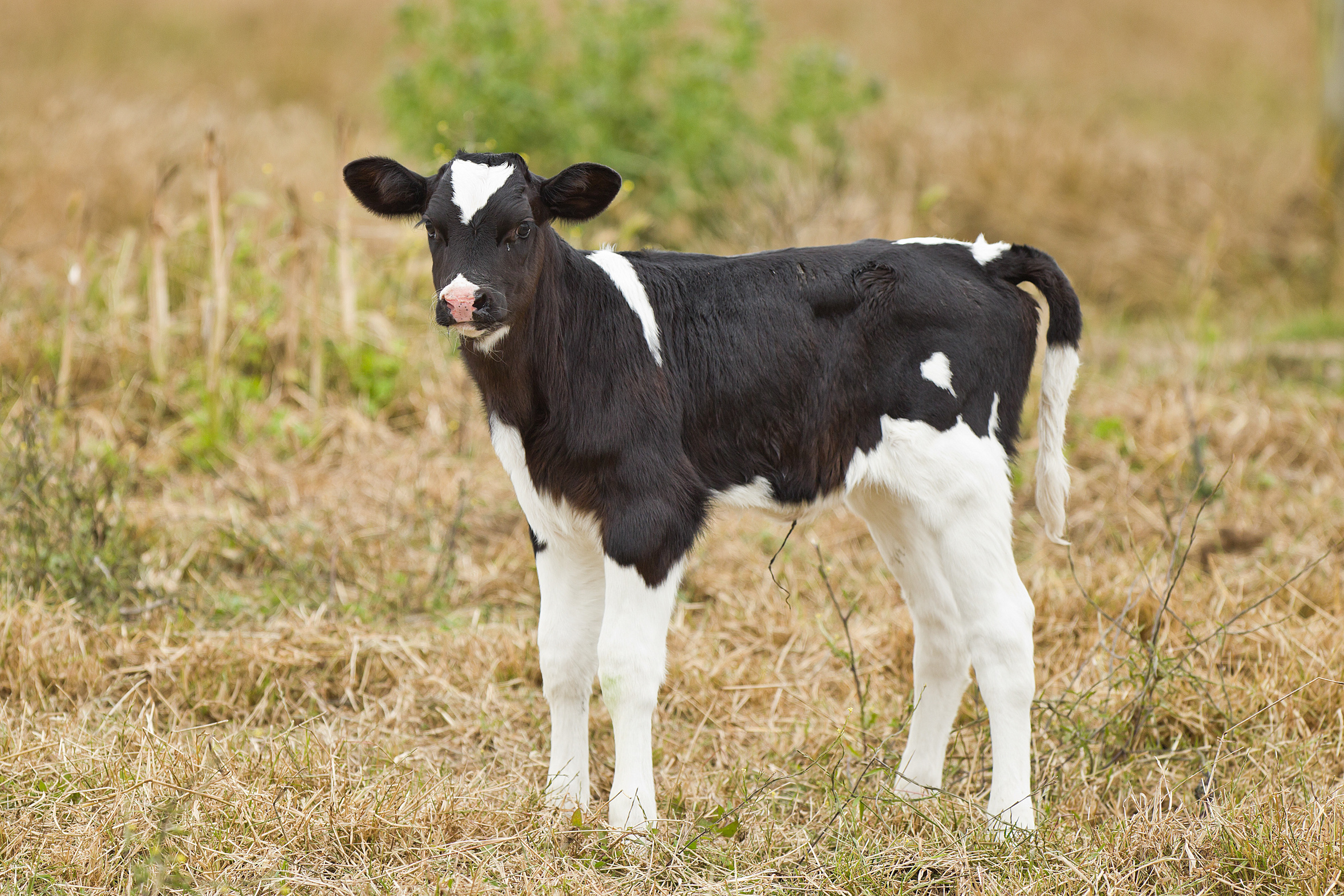
In 2015, the Ludwig Maximilian University of Munich examined the immunoglobulin supply of 1,242 newborn calves. This study showed that more than half of the calves were undersupplied: 23% severely (<5mg IgG / ml blood serum) and 36% slightly undersupplied (5-10mg IgG/ml). The supply situation was only satisfactory in 41% of the calves (> 10 mg IgG/ml).
Undersupply results in higher susceptibility to disease, higher mortality, and lower daily weight gain. This entails increased rearing costs. Besides, only healthy calves can achieve their full potential as adult animals. For example, when a calf experiences even mild diarrhea, it is expected to produce 344 kg less milk the first lactation (Welsch, 2016). Possible causes of diarrhea are infectious factors such as viruses (rota, coronaviruses), bacteria (E. coli) and parasites (cryptosporidia), but also non-infectious factors such as poor husbandry and feeding errors.
In December 2020, EW Nutrition conducted a telephone survey among 55 dairy cattle consultants and veterinarians from Spain, Germany, France, Poland, and Great Britain to review calves’ passive immunity.
This survey confirmed that calves lack sufficient amounts of immunoglobulins: 69.1% of respondents thought that calves were undersupplied. 76.4% of them saw a clear connection between early-occurring diarrheal diseases and calves’ insufficient passive immunity. Respondents came to these conclusions even though more than half of them thought that colostrum quality had not deteriorated during the last years (56.4%).
Egg immunoglobulins offer one way to support calves in case of diarrhea. Chickens form antibodies (IgY from “Immunoglobulins in Yolk”) against all disease pathogens they encounter and release them into the egg as an immunological starting aid for the chick. It does not matter whether the disease is relevant to poultry or cattle.
These antibodies can be used to improve poor-quality colostrum or to support the calf during acute diarrhea. Studies show that egg immunoglobulins act in calves’ intestines, where they can bind and block diarrhea pathogens (Ikemori et al., 1992).
A feeding study with 39 female newborn calves took place on an 800-cow dairy farm in Brandenburg, Eastern Germany. The objective was to examine whether the IgY-containing complementary feed Globigen Colostrum effectively supports calves during the first critical period. For the experiment, all calves were given high-quality colostrum (4L within 2 hours after birth). During the first 5 days of life, the 19 calves in the test group additionally received 100g of the complimentary feed stirred into the colostrum (day 1) or the mixed colostrum (days 2 – 5).
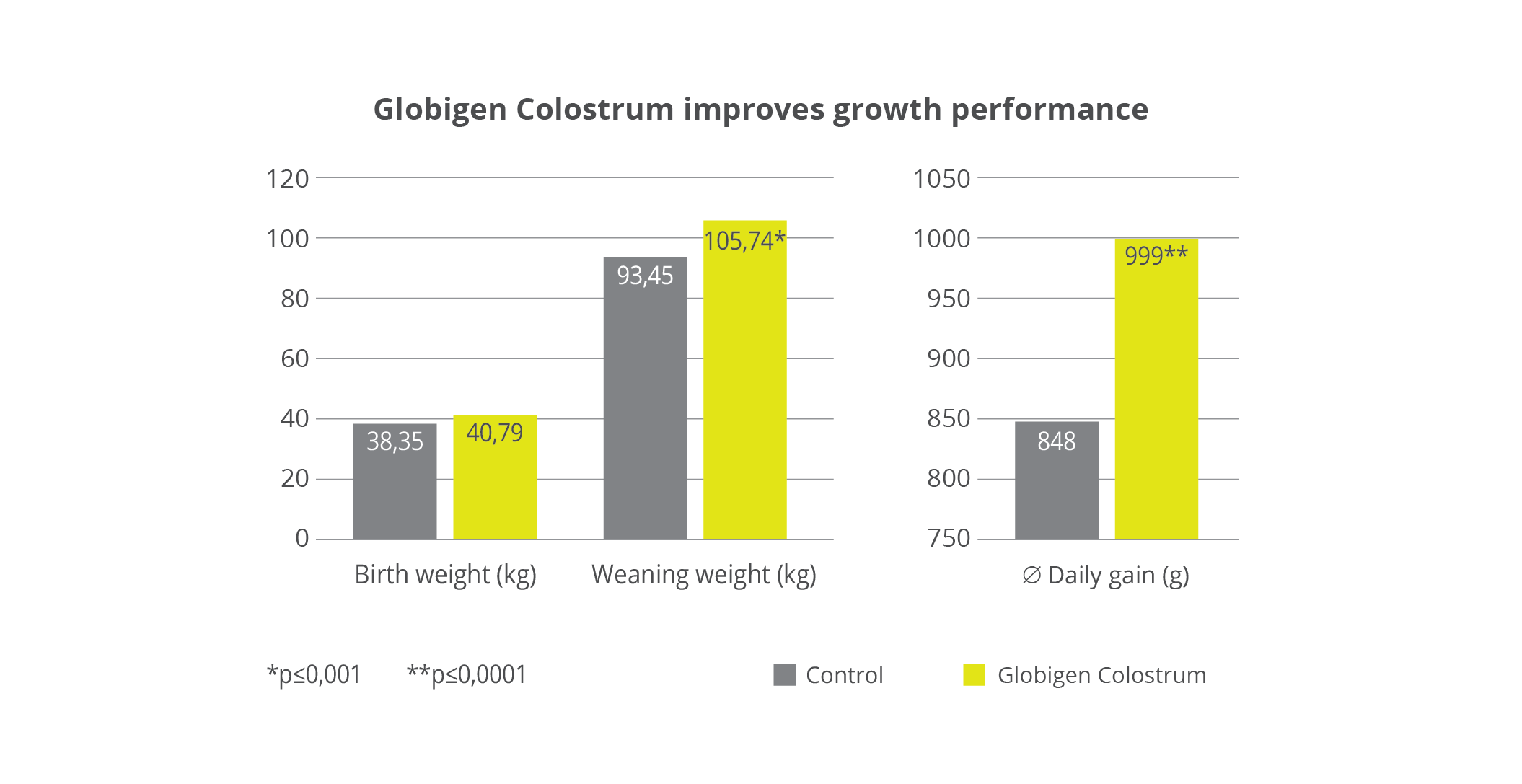
Result: The daily weight gain for the test group was 18% higher than in the control group (+ 151g). This resulted in 13% higher weaning weights (see above).
Three calves in the control group had mild diarrhea; in the test group, only one calf. However, antibiotics did not have to be used to treat the diarrhea.
The IgY-based product Globigen Calf Paste was tested on two dairy farms in Russia. These trials focused on reducing neonatal diarrhea, which occurs in the first 2 to 3 weeks of life. The product, a 30ml oral syringe with a dosing ring, was administered at a rate of 10ml per day for the first three days of life. On the first farm in the Belgorod region, the trial and control groups consisted of 11 calves each. On the 10th day of life, the diarrhea incidence per group was checked: while 73% of the calves in the control group had diarrhea, requiring antibiotics, only 1 calf of the trial group had diarrhea, and no antibiotic treatment was needed. On the second farm in the Moscow region, where the groups encompassed 20 calves each and observations took place on the 5th day of life, results were similar: 75% of the control animals suffered from diarrhea, but just 3 calves in the trial group showed signs of diarrhea.
In another trial, carried out with 38 calves on a dairy farm with 550 cows in North Rhine-Westphalia, Western Germany, the dietetic feed supplement Globigen Dia Stop was tested. This product is also based on egg immunoglobulins.
Only calves showing newborn diarrhea were used for this experiment. When diarrhea occurred, the 21 calves in the test group received 50g Globigen Dia Stop twice a day in addition to their milk drink. The diseased calves in the control group (17 calves) were given a rehydration solution, stirred into water, twice a day.
If the diarrhea could not be stopped after four days in the calves of either group, the animals were treated by a veterinarian.
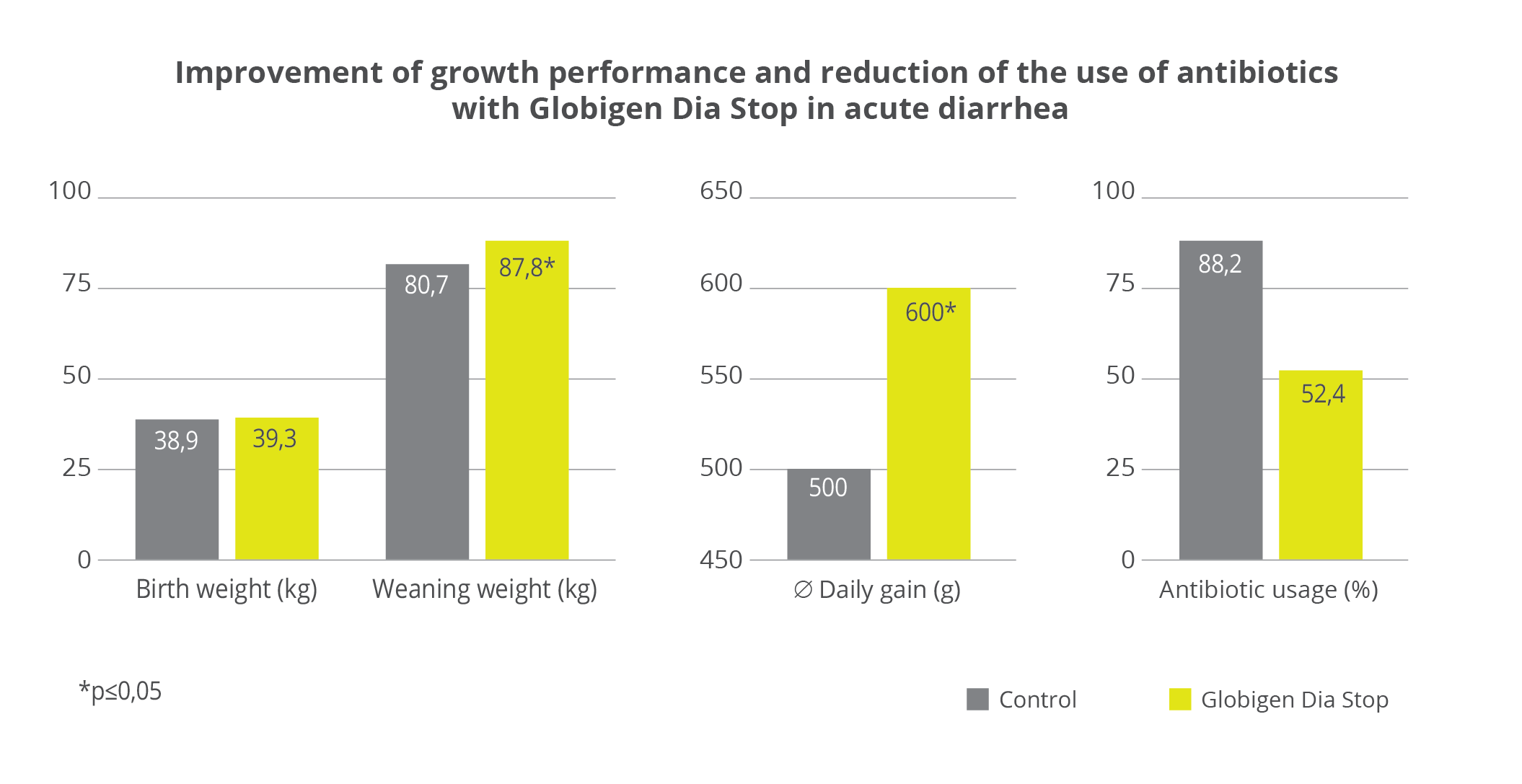
Result: In the test group, 100g (+ 20%) and thus significantly higher daily gains were achieved, which led to a 9% higher weaning weight. Furthermore, over 40% fewer calves had to be treated with antibiotics in the Globigen Dia Stop group than in the control group. (see above)
The results of these studies indicate that the administration of egg antibodies (IgY) to calves supports intestinal health and has a positive effect on calves’ performance. Globigen supplementation can likely reduce diarrhea incidence and severity, especially in the critical first phase of the calves’ life – thus ensuring high performance in the long term.

When you think of a “digitally mature company,” what do you see? The term might conjure up images of tech-savvy millennials in Silicon Valley, but digitally mature companies are all around you—in every industry, in every corner of the globe. They’re enterprises that have embraced digital technology to transform the way they do business and connect with their customers.

So what does a digitally mature company look like? It’s an enterprise that:
However you define it, digital maturity matters—and the research shows a direct correlation between being a digitally mature company and having bottom line success.
The economic benefits of digital maturity are well documented. A McKinsey study of 2,400 companies found that those able to exploit ICT to boost efficiency grew revenue 3.2% faster annually than their peers over a five-year period. Another study looked at more than 180 publicly listed companies from around the world, finding that digitally mature organizations outperformed their less mature competitors across all financial measures. This included a return on invested capital (ROIC) 50% higher than laggards.
In an increasingly digital world, companies that embrace technology are simply becoming more competitive and profitable than those who don’t. And it’s no wonder that digitally mature companies have a competitive edge. According to the 2016 State of Digital Business Transformation study conducted by SAP, organizations that see themselves as digitally mature outperform their peers in terms of net income by 20%. In fact, those with advanced digital capabilities enjoy a 42% net income margin compared with 18% for those without any digital capability.
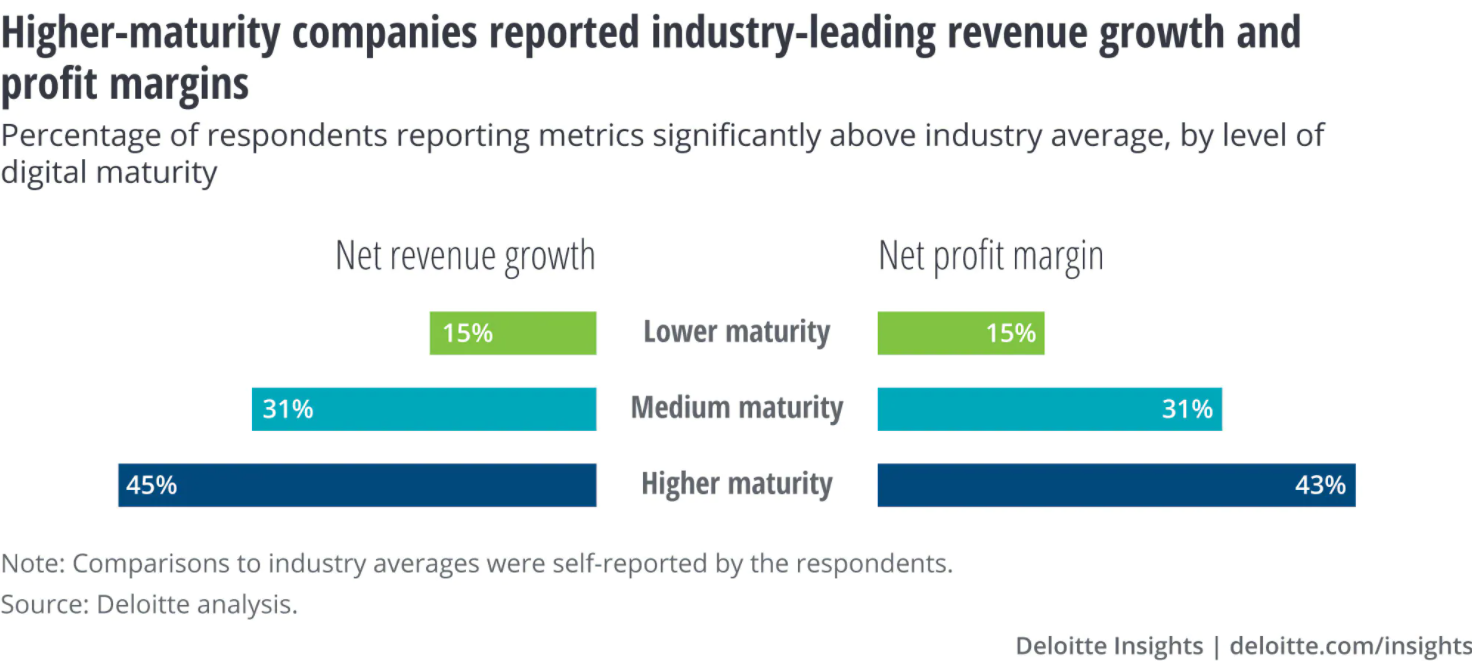
According to PwC’s Annual Global CEO Survey, digitally mature companies are out-performing their less digitally mature peers by 53 percent when it comes to revenue growth over the past three years.
Research shows that digitally mature companies are significantly more likely to have revenues over $1 billion than their digitally novice counterparts. And the larger the enterprise is, the greater the gap in revenue. For example, 50% of large enterprises with strong digital maturity have annual revenues over $1 billion, compared with only 10 percent of small organizations with weak digital maturity.
The numbers show an undeniable trend and help shape an answer to the question “why do digitally mature companies have better results”.
A digitally mature company can be defined as a business that has invested in digital technologies to transform the way it does business to enhance customer relationships, improve employee engagement, and streamline processes.
Digital maturity is not just about having the latest gadgets or software packages. It’s a holistic approach to using technology to create value and transform your organization into one that can compete and win in today’s marketplace.
Many organizations are still struggling to make this shift. Their strategies for deploying digital technologies are often limited, and their applications are not fully functional or properly integrated. They don’t have the right tools or the right talent to execute on their plans. As a result, they’re increasingly vulnerable to disruption from start-ups, new entrants, and other competitors who are much more adept at using digital technologies to achieve competitive advantage.
Digital maturity is also essential for any organization seeking to achieve great things through innovation – whether bringing new products or services to market or delivering an enhanced experience for customers.
But digital maturity does not come easily – or quickly. If a company has reached maturity, it’s probably because the management team has been working on it for years. They’ve had plenty of time to get the details right. They’ve also built a solid customer base and cultivated positive relationships with partners along the value chain. In other words, the sooner you set off, the faster you get there.
In the last decade, organizations have begun to realize that they must implement a digital approach to their business if they want to stay competitive. In the last few years, we’ve seen many companies begin to make this shift.
What does it take for an organization to become digitally mature? There are four components:
1) Business strategy. Companies that put together a digital strategy from the top down with support from the board are more likely to move forward than those that don’t create one.
2) Technology strategy. A technology strategy is essential for development, but it must be in line with an organization’s overall business goals.
3) Governance. Establishing governance structures can help organizations focus on what’s most important during times of uncertainty.
4) Employee skills. Organizations need a skilled workforce to be successful digitally, but training and development aren’t enough—digital maturity programs must be incorporated into daily operations.
Truly digitally mature organizations—that is, those that are able to reap the benefits of digital transformation—are already seeing demonstrable results. They’re seeing a return on their investment of time, money and resources; they’re becoming more efficient and effective; and they’re capturing new revenue streams.
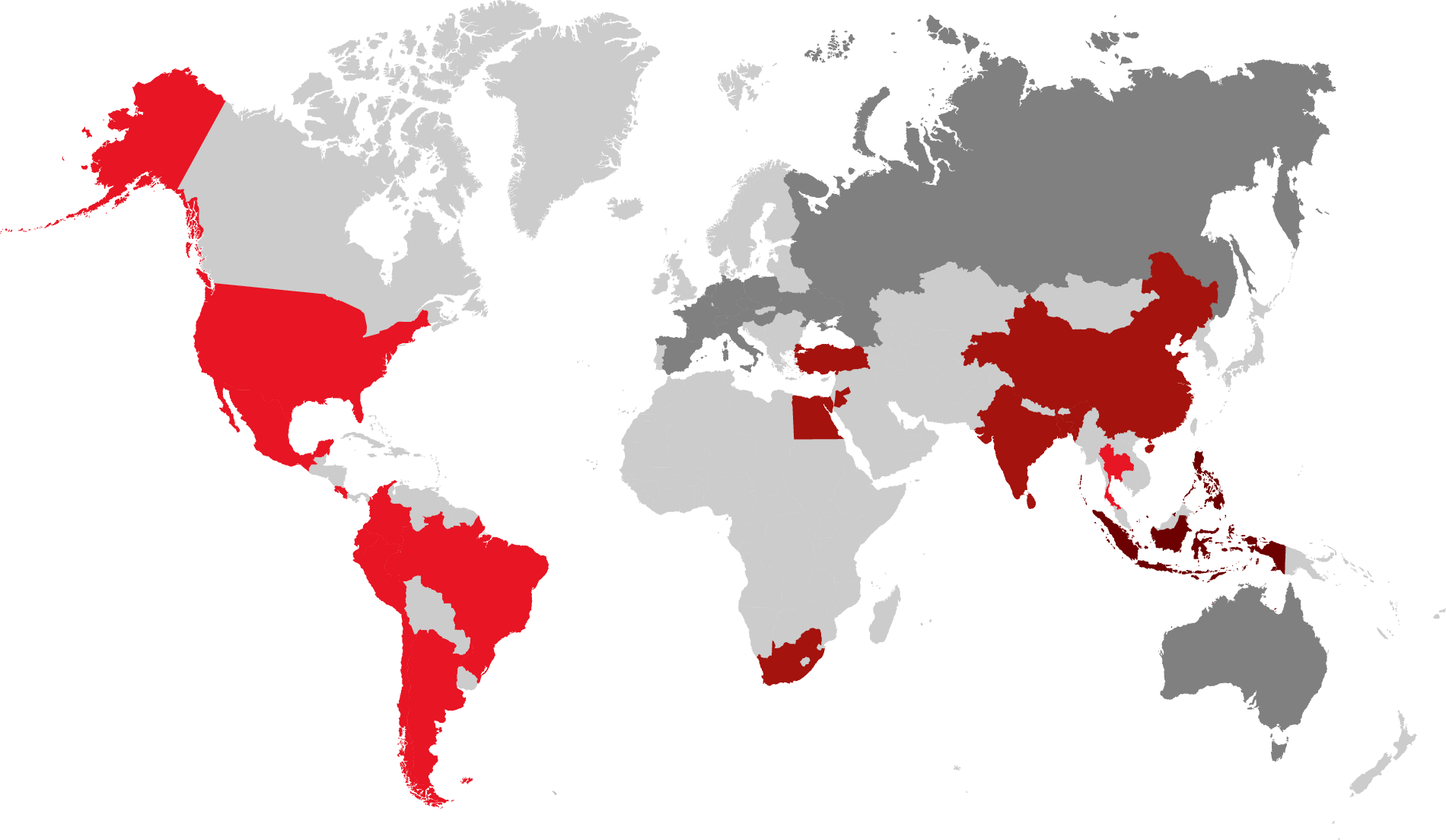
By Technical Team, EW Nutrition
Climate around the globe has changed, increasing atmospheric temperatures and carbon dioxide levels. This change favors the growth of toxigenic fungi in crops and thus increases the risk of mycotoxin contamination. When contaminating feed, mycotoxins exert adverse effects in animals and could be transferred into products such as milk and eggs.
*** Please download the full article for detailed information
Click to see the full-size image
Amongst naturally occurring mycotoxins, the five most important ones are aflatoxin, ochratoxin, deoxynivalenol, zearalenone, and fumonisin. Their incidence varies with the different climates, the prevalence of plant cultures, the occurrence of pests, and the handling of harvest and storage. Worldwide, farmers faced various and sometimes extremely high mycotoxin contamination in their feed materials in 2021. In the following, we show the major challenges in five main regions.
In Asia, high temperatures and humidity favor Aspergillus growth in grains. As a result, 95 % of the samples in South Asia and three-quarters of the samples in the China and the SEAP region (Indonesia, Philippines, Vietnam) showed aflatoxin contamination. The average contamination being higher than the threshold for all farm animals represents an increased risk for their health and performance.
In China and the SEAP region, also DON and T-2 were highly prevalent. Showing an incidence of more than 60%, they pose a severe risk when combined with aflatoxin.
In Mexico, Central and South America, fumonisin contamination prevailed with an incidence of almost 90% at average levels that can be considered risky for swine and dairy. Together with incidence levels of around 60% found for DON and T2, fumonisin may act synergically in the animals, raising the risk for health and performance.
The Fusarium species linked to these mycotoxin contaminations occur in the grains on the field. Amongst others, insect damage, droughts during growing, and rain at silking favor their development.
Contamination with trichothecenes (DON and T2) is the rule in the United States. The interaction of these mycotoxins is at least additive. The damage they cause to the gut opens the door to dysbiosis and disease, decreasing performance and profitability.
Also in this case, the responsible molds for the contamination are Fusarium species that develop when grains are in the field. As with fumonisins, the molds are favored by insect damage, moderate to warm temperatures and rainfall.
Fusarium toxins such as Fumonisin, DON, and T2 prevail in the region of Egypt, Jordan, and South Africa. In combination, these mycotoxins have additive effects at the intestinal level, which increases the risk of dysbiosis in poultry.
Since mycotoxin contamination affects animal health, measures must be taken to provide the best protection. Besides improving agricultural practices in the field, smart in-feed solutions and mold inhibitors can be used in stored grain. These measures help producers preserve feed quality after a troubled year for crops around the world.

Singapore – January 14, 2022 – EW Nutrition will participate in Australia’s International Dairy Week (IDW) in Tatura, Victoria, from January 16 to 20, 2022. Visitors will learn about innovative solutions for ruminant nutrition. Located at Site 37, EW Nutrition also invites attendees to explore topics such as toxin risk management and respiratory issues.
“We are excited to be here at IDW 2022. This is a great opportunity for us to showcase our cutting-edge dairy solutions. We look forward to connecting and working with our valued customers to enhance ruminant health and performance,” said David Sherwood, commercial director for Oceania at EW Nutrition.
Within the portfolio, the showcased products are Pasturefed Cattle Assurance System (PCAS) certified:
Activo Premium
Activo Premium contains standardized amounts of selected phytomolecules.
Mastersorb Gold
Mastersorb Gold is part of EW Nutrition’s Toxin Risk Management Program, which also includes services, on-site advice, and expert consultancy.
Prote-N
Prote-N is a slow-release source of nonprotein nitrogen (NPN).
About EW Nutrition
EW Nutrition offers animal nutrition solutions to the feed industry. The company’s focus is on gut health, supported by other product lines. EW Nutrition researches, develops, produces, sells and services most of the products it commercializes. In 50 countries, key accounts are served directly by EW Nutrition’s own personnel.
Contact:
Zack Mai
Marketing Manager, EW Nutrition South East Asia/Pacific
Phone no.: +65 6735 0038
Email: zack.mai@ew-nutrition.com

By Dr. Inge Heinzl, EW Nutrition
The liver is one of the most active organs within the avian body. Without the liver, the brain would not work, for example. Whenever glucose is not readily available for energy, the brain relies on ketone bodies provided by the liver. The liver also transforms and detoxifies substances foreign to the body (e.g., coccidiostats) and plays a role in immune defense. But how does the liver metabolism function exactly? Find out why it is so important to protect this crucial organ.

The liver fulfills various essential functions. The avian liver:
The brain, the muscle, the different organs of the body – all need energy to function. This fuel is provided by the liver. And it caters to different preferences, too: the different organs need different substances as fuel. The brain usually uses glucose and, in the case of necessity (hunger), ketone bodies. Skeletal muscles work with glucose and, if glucose is lacking, fatty acids for energy generation. Heart and liver gain energy through the ß-oxidation of fatty acids.
After they arrive in the gut, most of the nutrients are transported from the small intestine via the portal vein to the liver. There, they are further processed. Regardless of the nutritional supply, the liver must continuously provide energy for the other organs. In the following, different situations of energy availability are described.
After feed intake, there is enough energy to be metabolized. Glucose then is further processed as follows:
Insulin is involved in these actions, promoting the synthesis of fatty acids out of carbohydrates as well as the synthesis of VLDLs.

Figure 1: The role of the liver in the fed state [Zaefarian et al., 2019, Hermier, 1997]
Some time has passed since the last feed intake; glucose has been transported from the blood to the cells. However, the organs continue to need energy, which has to be released continuously from the organs in which it is stored:

Figure 2: The role of the liver in the state of decreasing energy [Braun and Sweazea, 2008; Sturkie, 2012; Stevens, 2004]
If the glycogen reserve in the liver is depleted after some hours since the last feed intake, fatty acids are degraded to ketone bodies in the skeletal muscles. In parallel, protein degradation frees up glucogenic amino acids that the liver can use for gluconeogenesis. The lactate from the anaerobe degradation of glucose in the skeletal muscles and glycerol can also be used for gluconeogenesis. In mammals, pyruvate is the best substrate for gluconeogenesis; in poultry, it is lactate.
Gluconeogenesis also takes place in the kidneys. During starvation, 30% of the gluconeogenesis is done by the kidneys and 70% by the liver. Birds are generally able to sustain higher rates of gluconeogenesis than mammals (Stevens, 2004).
To meet the brain’s energy requirements, the liver transforms fatty acids into ketone bodies; they are the only source of energy the brain accepts besides glucose. Although the liver is the main site of ketone production, its ability to use them is limited.
During starvation, glycogen storage in the heart muscle increases. Glycogen levels in the heart muscle are usually relatively low (1.60-2.00 mg / g); in the case of starvation, these levels may triple within 48-92 hours (Hazelwood, 1976) – probably an effect of increased gluconeogenesis.

Figure 3: The role of the liver in the state of starvation [Frias-Soler et al., 2021; Braun and Sweazea, 2008; Sturkie, 2012]
Depending on the catabolic pathway, the efficiency of glucose utilization varies considerably. Moreover, the age or development of the body is a decisive factor. Table 1 shows the variation in glucose utilization depending on age. In all cases, the efficiency of glucose utilization increases with age. However, the efficiency of lipogenesis increases most, which is one reason why older animals tend to get fat.
Table 1: Utilization of glucose for glycolysis (energy generation), glycogenesis (storage), and lipogenesis (storage) in gallus gallus, based on Scanes, 2015
| Age (days) | Glucose utilization1 (as a percentage of plateau level) | ||
| Glycolysis2 | Glycogenesis | Lipogenesis | |
| Late embryo and day 0 | 13.3 ± 0 | ˂ 0.5 | < 0.5 |
| 2 | 51.1 ± 6.4 | 10.0 ± 4.1 | 4.0 ± 1,0 |
| 4 | 85.4 ± 5.5 | 8.3 ± 0 | 36.8 ± 9.8 |
| 8 | 104.4 ± 4.6 | 7.6 ± 1.1 | 94.7 ± 14.7 |
| 12 | 84.5 ±10.5 | 34.8 ± 9.4 | 66.8 ± 10.4 |
| 16 | 120.8 ± 12.5 | 105.1 ± 24.5 | 144.2 ± 29.0 |
1Determined by utilization of [U _14 C] Glucose 2Plateau conversion to CO2: 1261 dpm/mg calculated from Goodridge (1968a)
Bold data are at plateau
The liver is involved in many processes in the organism. It takes part in protein synthesis, provides the building blocks for metabolic processes, and, hence, is essential for the body’s smooth functioning.
The liver is an important organ for protein synthesis. Most of the plasma proteins (90%) such as albumins, globulins (γ-globulins excluded) are produced by the liver. The liver also synthesizes transport proteins (e. g. for copper, retinol, iron), coagulation factors, and non-essential amino acids. For this purpose, amino acids, arriving from the gut via the portal vein, are transformed through deamination and transamination (Dhawale, 2007).
The liver produces cholesterol, a building block for the production of bile, steroid hormones, and vitamin D. Cholesterol is also an essential ingredient of the cell membrane.
As a bile producer, the liver plays a significant role in digestion. In the gut, the bile emulsifies the dietary fats into small droplets, which then can be absorbed via the gut cells (enterocytes) into the body. The bile is also a transport medium for waste products, through delivery into the gut lumen (detoxification function).
In poultry, the composition of the egg depends on the liver. Egg yolks consist of water (70%), proteins (10%), and lipids (20%). The yolk lipids are lipoproteins rich in triglycerides, built up in the liver and transported as egg yolk-specific VLDLs (VLDLy) to the ovary. Also, cholesterol is transported via lipoproteins to the egg yolk.
The liver is a storage organ for blood and glycogen (energy metabolism). Also, minerals (sodium) and trace elements such as copper, manganese, fluor, iodine, selenium, chlorine, and iron are retained. The liver has the highest participation in the Mn metabolism, and iron is accumulated as ferritin.
Vitamin A is stored in the highest concentrations after the transformation of carotin. The liver also accumulates vitamins D, K, B1, B12, C, riboflavin, pantothenic acid, nicotinic acid, folic acid, and biotin (Dhawale, 2007).
The liver filters the blood and, in this way, removes microorganisms (e.g., those originating from the gastrointestinal tract), toxins, and aged erythrocytes. For its immunological tasks, the liver has different types of immune-competent cells at its disposal. The so-called Kupffer cells are liver-specific macrophages descending from monocytes and belonging to the specific immune defense. They represent 80-90% of all tissue macrophages (Hinghofer-Szalkay, 2021).
In a healthy liver, the Kupffer cells can eliminate about 95% of the bacteria arriving through the blood. The main task of these cells is to ingest the enemies, process them, and surface parts of them as antigenic material. Besides the phagocytosis of bacteria, Kupffer cells can also incorporate toxins, immune complexes, parts of cells, and viruses. They excrete cytokines, provoking the production of acute-phase proteins (e.g., fibrinogen), fending off tumor cells and regulating the function of other liver cells. With the help of the Kupffer cells, the liver transforms or completely degrades toxins ingested with the feed (e.g., mycotoxins) (Zaefarian, 2019).
One example is nitrogen, a product of the protein metabolism that must be excreted in an energy-intensive process via the liver and the kidneys. Ammonia and keto acids are formed by deamination. As ammonia has a toxic effect in birds, it is transformed to uric acid, transported to the kidneys, and excreted from there.
The liver is also responsible for at least the partial conjugation of already used hormones (transformation into water-soluble substances), which are then excreted via the bile. Furthermore, it assists in the degradation of red blood cells. The Kupffer cells in the liver phagocytize (“eat”) overaged red blood cells. Reusable substances such as iron are kept, the useless residual is degraded and excreted (Hinghofer-Szalkay, 2021).
The liver fulfills critical tasks for the body, such as detoxification, immune defense participation, and energy management.
 For meat-producing animals, growth is a critical factor. The growth rate is determined by cell growth, which depends on the speed of cell division and the synthesis of protein in the liver and muscle cells. It furthermore depends on the production and secretion of growth-regulating hormones and related metabolism processes that also take place in the liver.
For meat-producing animals, growth is a critical factor. The growth rate is determined by cell growth, which depends on the speed of cell division and the synthesis of protein in the liver and muscle cells. It furthermore depends on the production and secretion of growth-regulating hormones and related metabolism processes that also take place in the liver.
Thus, to keep animals in good health and maintain high growth performance,the protection of the liver should be a top priority for the producer.
Dhawale, Avinash. “The Liver: a Big Organ with a Big Role.” World Poultry 23, no. 10 (November 23, 2007): 34–36.
Grashorn, M. “Eiqualität.” Essay. In Legehuhnzucht Und Eiererzeugung: Empfehlungen für Die Praxis Spec. issue 322, Spec. issue 322:19–33. Braunschweig, Germany: Johann Heinrich von Thünen-Institut, Bundesforschungsinstitut für Ländliche Raüme, Wald und Fischerei, 2009.
Hinghofer-Szalkay, H. “Eigenschaften Und Aufgaben Hepatischer Nichtparenchymzellen.” Physiologie nicht-parenchymale Leberzellen Funktion. Accessed December 21, 2021. http://physiologie.cc/III.3.htm.
Scanes, C. G. “Carbohydrate Metabolism.” Essay. In Sturkie’s Avian Physiology; 6th Ed., 443. London: Academic Press/Elsevier, 2015.
Scanes, C. G., and Paul D. Sturkie. “Adipose Tissue and Lipid Metabolism.” Essay. In Sturkie’s Avian Physiology ; 6th Ed., 443. London: Academic Press/Elsevier, 2015.
Stevens, Lewis. “Carbohydrate and Intermediary Metabolism.” Essay. In Avian Biochemistry and Molecular Biology, 3rd ed., 29–36. Cambridge <<>>: Cambridge Univ. Press, 2004.
Zaefarian, Faegheh, Mohammad Abdollahi, Aaron Cowieson, and Velmurugu Ravindran. “Avian Liver: The Forgotten Organ.” Animals 9, no. 2 (2019): 63. https://doi.org/10.3390/ani9020063.

by Technical Team, EW Nutrition
The Glasgow Climate Pact reached at the COP26 summit this November sent a clear message to businesses across the globe: Put sustainability on top of your corporate agenda or risk losing out. But how can food and feed producers translate the knowledge that climate change is happening into good business decisions? What impact is it causing, and which actions can we take today?
There is an overwhelming consensus among scientists that climate change is happening and that we need to stop it. Long-term changes in global temperature and weather patterns are nothing new. What is new is that these shifts are primarily driven by human activities.
Activities such as burning fossil fuels, livestock farming, and deforestation release carbon dioxides and other greenhouse gases (GHG) into the atmosphere. GHG trap the sun’s heat and cause average temperatures to rise.
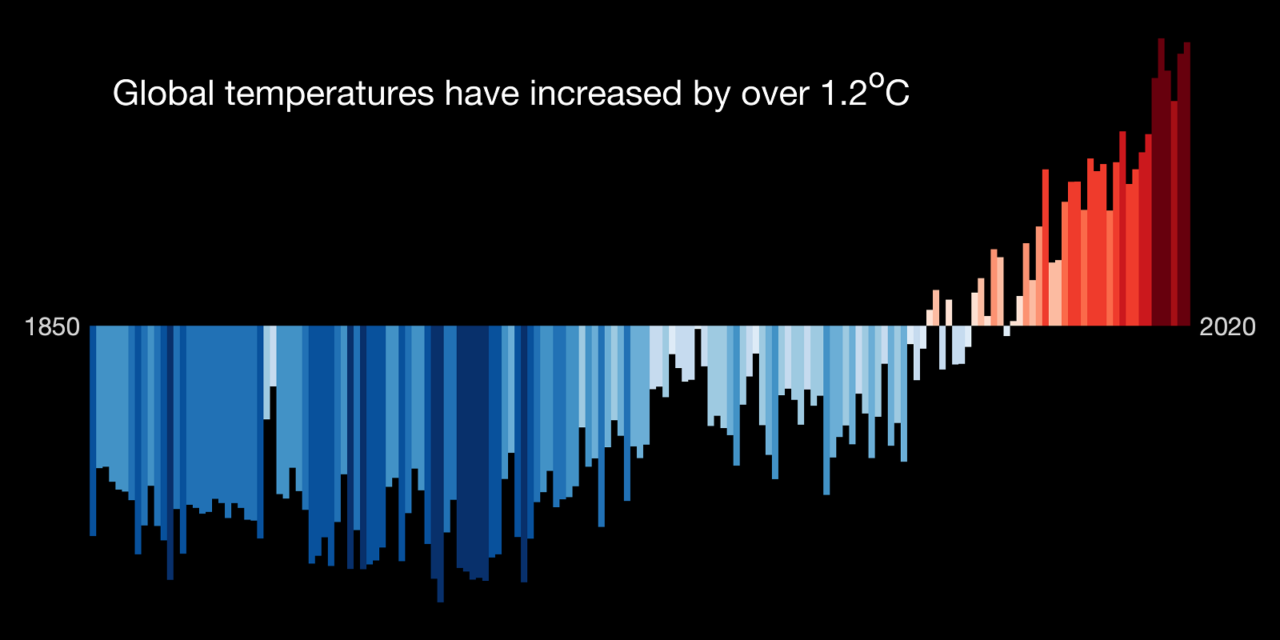
Compared to the pre-industrial era, average temperatures are now 1.2° C warmer. That doesn’t sound like a lot. But the effects are disastrous and disproportionately so for people in low-income communities and developing countries.
Climate change is already causing sea level rises, threatening coastal regions, and ocean acidification, which disrupts global seafood supplies. Unprecedented losses in biodiversity are compromising food security and ecosystem services (such as pollination and irrigation). Biodiversity losses also expose us to zoonotic diseases – for example, the ongoing COVID-19 pandemic has zoonotic origins.
Due to climate change, the frequency and severity of extreme weather events are increasing. As countries in Europe and China experience historic rainfall and flooding, other parts of the world, such as Australia, the western US, and many African countries, face intense droughts. With further warming, Pacific islands will disappear under rising sea levels. And regions such as the Middle East will suffer from extreme heatwaves and see farmland turn into deserts.
While some crops and areas benefit from higher temperatures and changed weather patterns, on the whole, it is becoming more difficult to feed the world. Extreme weather events such as droughts, floods, hurricanes, heatwaves, and wildfires pose severe challenges for agricultural businesses.
Agricultural production costs are and will be increasing further because climate change effects entail water scarcity, raw material shortages, higher energy prices, and stiffer competition for land as certain areas become climatically unsuitable for production.

Feed and food crop yields and quality suffer both from torrential rain and flooding and heat waves and droughts. Researchers from the University of Minnesota have found that climate change is already reducing global rice yields by 0.3% and wheat yields by 0.9% on average each year. Another study showed that every 1° C increase in global mean temperature would, on average, reduce global yields of wheat by 6.0%, rice by 3.2%, maize by 7.4%, and soybean by 3.1%.
We also see increased problems with pests and diseases. Pests already destroy 40 % of global crop production each year. As temperatures rise, pests from fall armyworms to desert locusts expand into new territories. Due to warmer temperatures, disease vectors such as mosquitoes, flies, and ticks also proliferate and migrate, carrying new pathogens to previously unexposed livestock. Additionally, decreased forage quality, heat stress, and water shortages already compromise livestock immunity.
And let’s not forget that the wellbeing and safety of the workforce are directly affected by climate change effects such as extreme temperatures and reduced air quality. This is even more true for outdoor workers and the 143 million “climate migrants” we expect to see by 2050. Climate change has also triggered a significant cultural shift, especially in younger generations. The climate-conscious GenZ talent only wants to work for employers who genuinely commit to sustainability.
Global warming must be limited to 1.5° C to avert the most devastating impacts. To achieve this, we have to cut greenhouse gas emissions in half by 2030. And by 2050, the world has to reach “net-zero” emissions, i.e., removing as many greenhouse gases from the atmosphere as we release into it.
Climate change regulations are becoming more stringent, especially for the energy, transport, and agricultural sectors. As UN High-level Climate Action Champion Nigel Topping puts it:
“If you haven’t got a net-zero target now, you’re looking like you don’t care about the next generation, and you’re not paying attention to regulations coming down the pipe. Your credit rating is at risk, and your ability to attract and keep talent is at risk.”
What can we do? Agriculture is unusual in that its contribution to anthropogenic climate change mostly comes from methane and nitrous oxide instead of carbon dioxide. Nitrous oxide emissions stem from soils, fertilizers, and manure, while ruminants and rice cultivation release methane.
Across these sectors, much more needs to be done at the policy level to incentivize sustainable husbandry, knowledge transfer, and targeted R&D. Still, wider adoption of existing best practices and technologies would help the global food and feed sectors to be more resilient and substantially reduce its GHG.
Enhanced efficiency fertilizers can reduce nitrous oxide emissions from soils, while phytogenic feed additives curb methane emissions in ruminants. And exciting research on topics such as pheromone-based pest control shows that climate change adaptation opens up new business opportunities.
Spend time on a detailed review of your company’s climate impact. This will reveal opportunities for emission reductions and decarbonization, both in your direct operations and along the value chain. More energy-efficient compound feed production, for example, helps feed mills but also improves the carbon footprint of the final animal products. And in times of Agriculture 4.0, investing in digital technologies, platforms, and processes will be vital to identifying and capitalizing on new business opportunities for climate-conscious production.
No one bears the brunt of climate change quite as intensely as agribusinesses. Let’s champion sustainability for improved corporate reputation, stronger risk management, long-run cost savings, market access, and attracting and retaining qualified employees and customers.
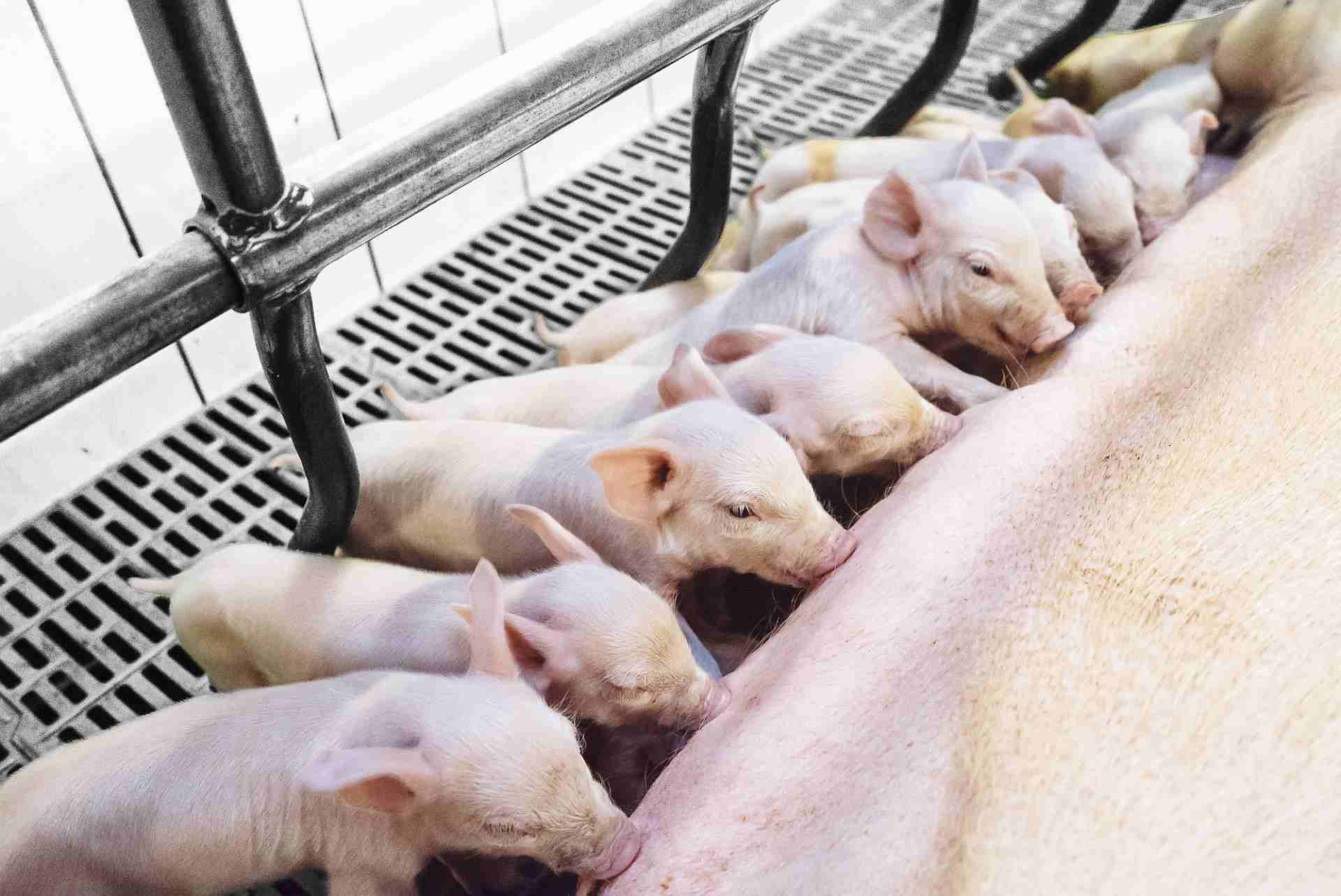
By Technical Team, EW Nutrition
As pig production specialists, we understand that our animals are under constant challenge during their life. Challenges can be severe or moderate, correlated to several factors – such as, for instance, stage of production, environment, and so on – but they will always be present. To be successful, we need to understand how to counter these challenges and support the healthy development of our pigs.
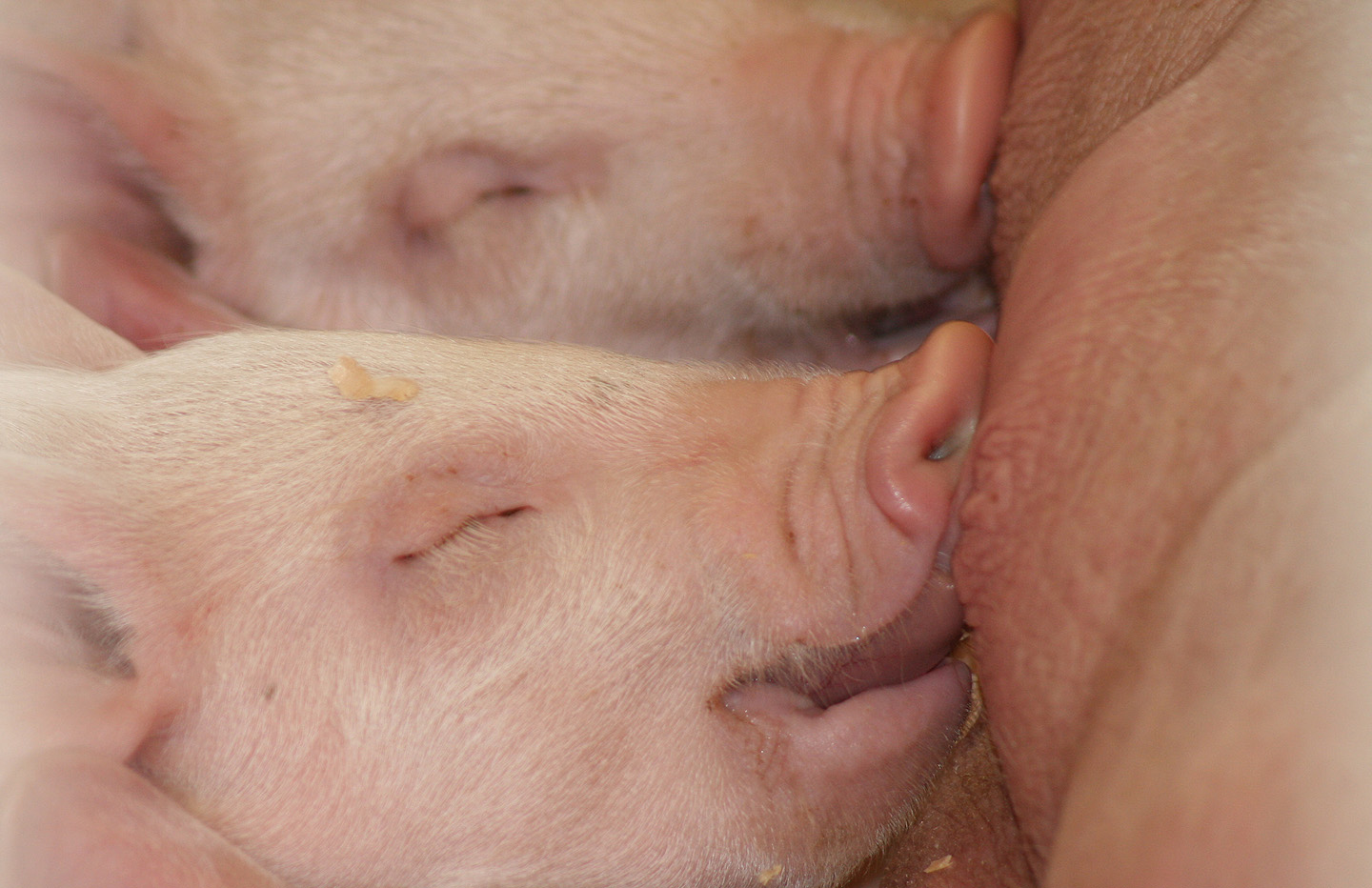
For years we have been increasing our understanding of how to formulate diets to support a healthy intestine through the optimal use of the supplied nutrients. Functional proteins, immune-related amino acids, and fiber are now applied worldwide for improved pig nutrition.
However, pig producers have also realized that these nutritional strategies alone are not always fully efficient in preventing an “irritation” of the immune system and/or in preventing diseases from happening.
Immune nutrition is gaining a strong foothold in pig production, and the body of research and evidence grows richer every year. At the same time, we see genetics continually evolving and bringing production potential to increasingly higher levels. We are also constantly increasing our understanding of the importance of farm and feed management, as well as biosecurity in this process.
Finally, the importance of a stable microflora is now uncontested. Especially around weaning, a stable microflora is necessary to prevent the proliferation of pathogens such as E.coli bacteria. Such pathogens can degrade the lysine (the main amino acid for muscle protein production) we have added to our formulations, rendering it useless.
Single molecules (or additives) are able to support the development of gut microflora, boost its integrity, and therefore help the animals use “traditional nutrients” in a more effective way.
Animal performance is influenced by complex processes, from metabolism to farm biosecurity. Environmental conditions, diet formulation and feed management, and health status, among others, directly affect the amount of the genetic potential that animals can effectively express.
Among these so-called non-genetic variables, health status is one of the most decisive factors for the optimal performance from a given genotype. Due to the occurrence of (sub-) clinical diseases, the inflammatory process can be triggered and may result in a decrease in weight gain and feed efficiency.
Not so long ago, pig producers believed that a maximized immune response would always be ideal for achieving the best production levels. However, after decades spent researching what this “maximized immune response” could mean to our pigs, studies from different parts of the globe proved that an activated immune system could negatively affect animal performance. The perception is nowadays common sense within the global pig production industry.
That understanding led us to increasingly search for production systems that will yield the best conditions for the pigs. This means minimum contact with pathogens, reduced stress factors, and therefore a lower need for an activated immune system.
The immune system has as main objective to identify the presence of antigens – substances that are not known to the body – and protect the body from these “intruders”. The main players among these substances are bacteria and viruses. However, some proteins can also trigger an immunological reaction. Specific immune cells are responsible for the transfer of information to the other systems of the body so that it can respond adequately. This response from the immune system includes metabolic changes that can affect the demand for nutrients and, therefore, the animals’ growth.
The stimulation of the immune system has three main metabolic consequences:
In general, the immune system responds to antigens, releasing cytokines that activate the cellular (phagocytes) and humoral components (antibody), resulting in a decreased feed intake and an increased body temperature/heat production.
When feed formulation is concerned, possibly even more important is to understand that the activation of the immune system leads to a change in the distribution of nutrients. The basal metabolic rate and the use of carbohydrates will have completely different patterns in such an event. For instance, some glucose supplied through the feed follows its course to peripheral tissues; however, part of the glucose is used to support the activated immune system. As a consequence, the energy requirement of the animal increases.
Protein synthesis and amino acid utilization also change during this process. There is a reduction of body protein synthesis and an increased rate of degradation. The nitrogen requirement increases because of the higher synthesis of acute-phase proteins and other immunological cells.
However, increased lysine levels in the diets will not always help the piglets compensate for this shift in the protein metabolism. According to Shurson & Johnston (1998), when the immune system is activated, there is further deamination of amino acids and increased urinary excretion of nitrogen. Therefore we need to understand better which amino acids must be supplied in a challenging situation.
In pigs, the gastrointestinal tract is, to a large extent, responsible for performance. This happens because the gut is the route for absorption of nutrients, but also a reservoir of hundreds of thousands of different microorganisms – including the pathogenic ones.
Gut health and its meaning have been the topic of several peer-reviewed articles in the last few decades (Adewole et al., 2016, Bischoff, 2011, Celi et al., 2017, Jayaraman and Nyachoti, 2017, Kogut and Arsenault, 2016, Moeser et al., 2017, Pluske, 2013). Despite the valuable body of knowledge accumulated on the topic, a clear and widely-accepted definition is still lacking. Kogut and Arsenault (2016) define it in the title of their paper as “the new paradigm in food animal production”. The authors explain it as the “absence / prevention / avoidance of disease so that the animal is able to perform its physiological functions in order to withstand exogenous and endogenous stressors”.
In a recently published paper, Pluske et al. (2018) add to the above definition that gut health should be considered in a more general context. They describe it “a generalized condition of homeostasis in the GIT, with respect to its overall structure and function”. The authors add to this definition that gut health in pigs can be compromised even when no clinical symptoms of disease can be observed. Every stressful factor can undermine the immune response of pigs and, therefore, the animals’ performance.
All good information on this topic leads us to the conclusion that, without gut balance, livestock cannot perform as expected. Therefore, balance is the objective for which we formulate our pigs’ feed.
The photos included here were taken in the field and show that taking action against this reality is a must for keeping animals healthy.
Much of this action is related to farm management. The most effective way to minimize such situations is to implement a strict control system in the feed production sites, including controlling raw material quality.
Additives can be used to improve the safety of raw materials. As already extensively discussed, everything that goes into the intestine of the animals will affect gut health and performance. Therefore, the potential harmful load of mycotoxins should be taken into account. Besides careful handling at harvest and the proper storage of grains, mycotoxin binders can be applied to further decrease the risk of mycotoxin contamination.
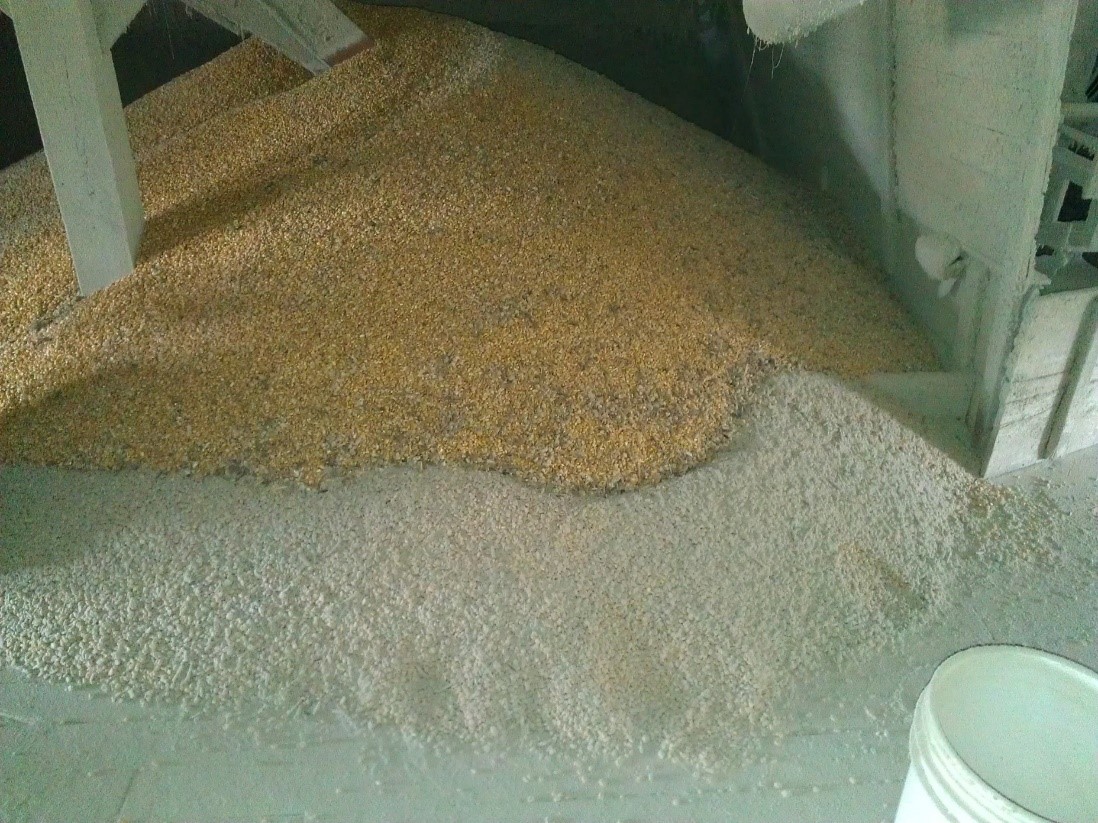

The gut-health-focused formulation of diets must take into account the following essentials:
A lower pH in the stomach slows the passage rate of the feed from the stomach to the small intestine. A longer stay of the feed in the stomach potentially increases the digestion of starch and protein. The secretion of pancreatic juices stimulated by the acidic stomach content will also improve the digestion of feed in the small intestine.
For weaned pigs, it is essential that as little as possible of the substrate will reach the large intestine and be fermented. Pathogens take advantage of undigested feed to proliferate. Lowering these “nutrients” will decrease the risk of bacterial overgrowth.
The same is true where protein sources and their levels are concerned. It is essential to reduce protein content as much as possible and preferably use synthetic (essential) amino acids. The application of such sources of amino acids has been proven long ago, and yet in some cases, it is still not fully utilized. Finally, using highly digestible protein sources should, at this point, be a matter of mere routine.
All these strategies have the same goal: the reduction of undigested substances in the gut. Additionally, the reduction of the protein levels can also decrease the costs of the diets.
Further diet adjustments, such as increasing the sulfur amino acids (SAA) tryptophan and threonine to lysine ratio, must also be considered (Goodband et al., 2014; Sterndale et al., 2017). Although the concept of better balancing tryptophan and threonine are quite clear among nutritionists, SAA are sometimes overestimated. Sulfur amino acids are the major amino acids in proteins related to body maintenance, but not so high in muscle proteins. Therefore, the requirement of SAA must also be approached differently. Unlike lysine, the requirements of SAA tend to be higher in immunologically stimulated animals (Table 1).
| Pig weight (kg)
|
ISA* | SID Lysine (%) | SAA (%) | SAA:Lys |
| 9 | High | 1,34 | 0,64 | 0,48 |
| Low | 1,07 | 0,59 | 0,55 | |
| 14 | High | 1,22 | 0,62 | 0,51 |
| Low | 0,99 | 0,57 | 0,58 |
Table 1. Effect of the immune system activation on the demand for lysine and sulfur amino acids in pigs (Stahly et al., 1998)
*ISA – immune system activation
Vitamins and minerals are classic nutrients to be considered when formulating gut health-related diets. Maybe not so extensive as the amino acids and protein levels, these nutrients have, however, been found to carry benefits in challenging situations. In the past several years, a lot was published on the requirements of pigs facing an activation of the immune system. Stahly et al. (1996) concluded that when the immune system is activated, the phosphorous requirements change.
| Parameters
|
ISA* | |
| High | Low | |
| Feed intake (g/d) | 674 | 833 |
| Weight gain (g/d) | 426 | 566 |
| Available P (%) | 0,45 | 0,65 |
Table 2. Effect of the immune system activation on the performance and phosphorous requirements of pigs (Stahly et al., 1998)
*ISA – immune system activation
Another example is vitamin A. It is involved in the function of macrophages and neutrophils. Vitamin A deficiency decreases the migratory and phagocytic abilities of the immune cells. A lower antibody production is observed in vitamin A deficiency as well. Furthermore, vitamin A is an important factor in mucosal immunity, because this vitamin plays a role in lymphocyte homing in the mucosa (Duriancik et al., 2010).
Phytomolecules are currently considered one of the top alternatives to in-feed antibiotics for pigs worldwide. Programs sponsored by the European Union are once more evaluating the effectiveness of these compounds as part of a strategy to produce sustainable pigs with low or no antibiotic use. The EIP-Agri (European Innovation Partnership “Agricultural Productivity and Sustainability”) released a document with suggestions to lower the use of antibiotics in feed by acting in three areas:
Under the last topic, the commission recommends plant-based feed additives to be further examined.
Antibiotics have been used for many years for supporting performance in animal production, especially in critical moments. The mode of action consists of the reduction of pathogen proliferation and inflammation processes in the digestive tract. These (soon-to-be-) banned compounds therefore reduce the activation of the immune system, helping keep pigs healthy through a healthy gastrointestinal tract. As potential alternatives to antibiotic usage, phytomolecules should be able to do the same.
Most phytomolecules used nowadays aim to control the number and type of bacteria in the gut of animals. According to Burt (2004), the antimicrobial activity of phytomolecules is not the result of one specific mode of action, but a combination of effects on different targets of the cell. This includes disruption of the membrane by terpenoids and phenolics, metal chelation by phenols and flavonoids, and protective effects against viral infections for certain alkaloids and coumarins (Cowan, 1999).
The antimicrobial efficacy is one of the most important activities of secondary plant compounds, but it also impacts digestion. Windisch et al. (2008) states that growth-promoting agents decrease immune defense stress during critical situations. They increase the intestinal availability of essential nutrients for absorption, thus promoting the growth of the animal.
Indeed, phytomolecules are a good tool for stabilizing the gut microbiota. But more can be expected when adding this class of additives into your formulation and/or farm operations. Mavromichalis, in his book “Piglet Nutrition Notes – Volume 2”, brings attention to the advantages of using phytomolecules such as capsaicin, which is often related to increased feed intake. Recent research has demonstrated that capsaicin increases the secretion of digestive enzymes that may result in enhanced nutrient digestibility. According to Mavromichalis, this can lead to a better feed conversion rate as more nutrients are available to the animal. Indirectly, this also helps control the general bacterial load in the gut.
This results from the polyphenols’ capacity to act as metal-chelators, free radical scavengers, hydrogen donators, and inhibitors of the enzymatic systems responsible for initiating oxidation reaction. Furthermore, they can act as a substrate for free radicals such as superoxide or hydroxyl, or intervene in propagation reactions.
This variety of benefits explains at least partially the high level of interest in this group of additives for pigs under challenging conditions. For the production of effective blends, it is crucial to understand the different modes of action of the phytomolecules and the probable existing synergies. Furthermore, the production technology must be considered. For instance, microencapsulation techniques that prevent losses during feed processing are an important consideration.
The recent outbreak of African Swine Fever focused our attention on something that is sometimes neglected on the farm: biosecurity rules. According to the report “Good Practices For Biosecurity In The Pig Sector” (2010), the three main elements of biosecurity are:
In general terms, the following steps must be adopted with the clear goal of reducing the challenges that the pigs are facing.
These simple actions can make a big difference to the performance of the pigs, and as a consequence to the profitability of a swine farm.
Different formulations and reassessed nutritional level recommendations have been on the radar for a couple of years. It is high time to consider using efficient additives to support the pigs’ gut health. Phytomolecules appear as one of the most prominent tools to reduce pathogenic stress in pig production. Either via feed or water, phytomolecules are proven to reduce bacterial contamination and therefore reduce the need for antibiotic interventions. Furthermore, a more careful look at our daily activities in the farm is crucial. Paying attention to biosecurity and to feed safety should be standard tools to improve performance and the success of pig production operations.
References are available upon request.
*The article was initially published in the PROCEEDINGS OF THE PFQC 2019

By Technical Team, EW Nutrition
COVID-19 is definitely still a concern across the globe. With only about 47% of the world fully vaccinated, chances are we will not see the end of it next year. And with the unequal distribution of vaccines, globalization will keep bringing it home.
However, while everyone has an eye on the disruptions caused by COVID-19 to businesses and society in general, there are other looming challenges to prepare for. Here is a brief look at the top 5 challenges that rose to the surface in 2021, which are forecast to cause even bigger waves in 2022.

Greenwashing doesn’t wash anymore.
In 2021, sustainability has become an unavoidable topic not just for ecologists and (once a year or so) heads of state, but also for businesses and the masses. With extreme weather phenomena looming large in the news, climate change has become a fact of life. It no longer needs to be accepted as much as it needs to be managed.
The challenge is twofold. One the one hand, businesses need to demonstrate corporate accountability by monitoring the environmental footprint of their activities. On the other hand, businesses need to preserve the financial viability of their sustainability initiatives.
The balance between accountability and financial viability is still hard to find. Sustainability in business is an expensive proposition. Not only is it costly to implement fully sustainable measures, but finding the sustainability hotspots in your value chain and retrieving the data is sometimes nearly impossible. And, while reporting for scope 1 and 2 is somewhat easier, scope 3 accounting is still a tough nut to break.
Based on the Greenhouse Gas (GHG) Protocol, emissions are divided by source into 3 major scopes:
Scope 1 – direct emissions of the reporting company. This includes owned or controlled sources such as company facilities or company vehicles.
Scope 2 – indirect emissions from consumption. Here are included purchased electricity, steam, heating and cooling for the company’s use.
Scope 3 – all indirect emissions along the value chain. Under scope 3 fall upstream and downstream emissions through purchased goods and services, capital goods, processing, transportation and distribution, waste, use of sold products, and much more.
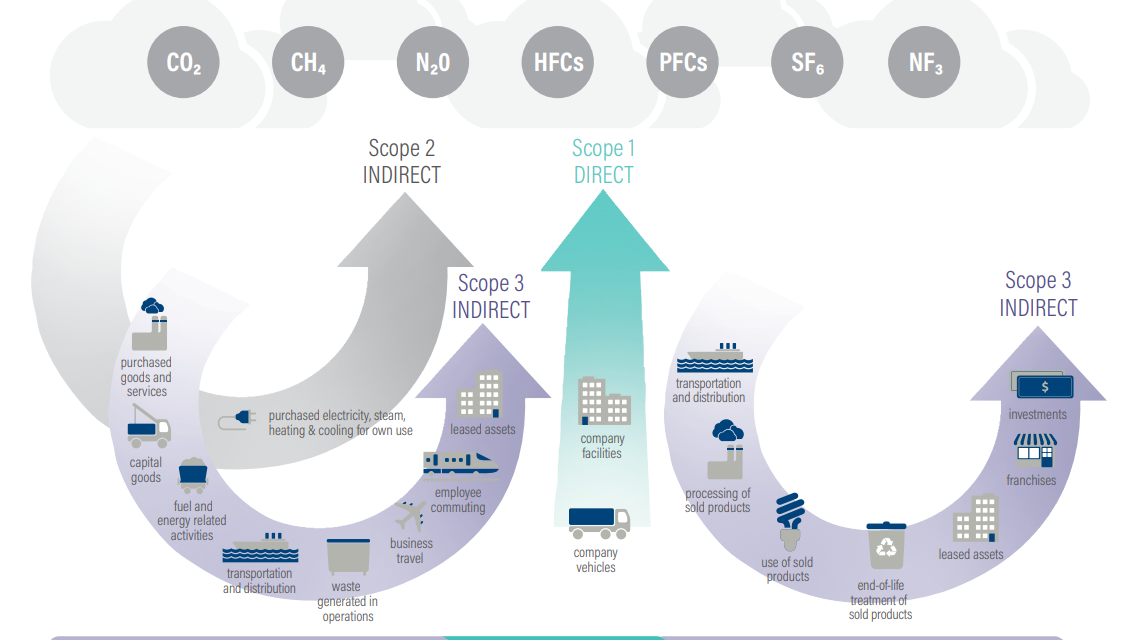
Source: GHG Protocol
Nevertheless, the equation must balance. A study by Pew Research Center shows that sustainability and addressing climate change are not just thoughts, but immediate concerns for the younger generation. Gen Z (people born between 1997-2012) are actively engaged in following and/or combatting the effects of climate change. Research by Deloitte indicates that, for Gen Z, climate change and protecting the environment are the top concern.
When your upcoming workforce demonstrates such strong interest, it is remiss to ignore it.
This is getting serious.
Deadly snowstorm in Spain in January. A deadly heatwave that killed 569 people in Canada in June. Deadly floods that affected western Germany, The Netherlands, and Belgium in July. Deadly fires that raged across Italy and Greece in August. And many more deadly extreme weather events whose roots lie in climate change.
They are not just a reason to join the fight for sustainability. They are, in more immediate terms, a reason to examine how well your business is prepared to face the next extreme weather event. Because it is definitely coming. And it may affect your business – possibly directly, depending on your location, but definitely indirectly. The impact of resource scarcity could already be felt this year, when extreme weather events around the world affected harvest quantity and quality. Coffee and sugar futures have been on the rise for years, and so have wheat prices.
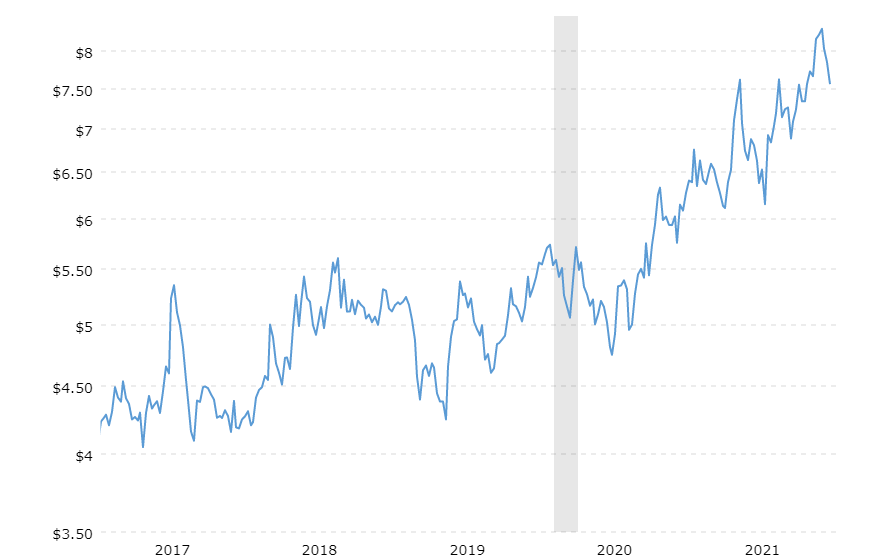
Source: Macrotrends
In fact, according to a 2021 Deloitte report, companies are actively concerned about the impact of climate change issues on their activities, with climate-related disasters topping the list and scarcity of resources a close second.
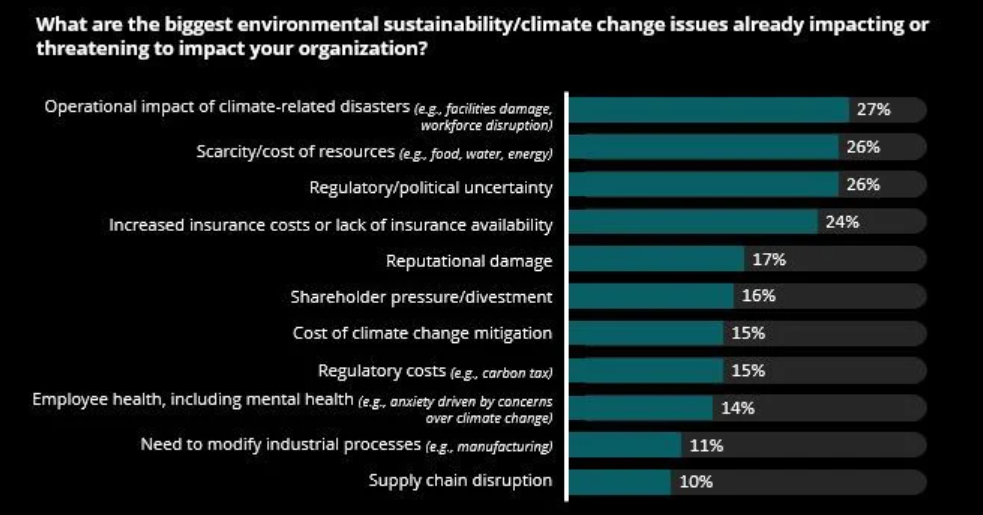
Source: Deloitte
Being prepared for extreme events means, in most cases, managing risks across company facilities, as well as across the value chain. The more widespread and varied the production footprint and sourcing capabilities, the better can a company weather the storm.
No, it’s not getting better soon.
In fact, after over a year of constant disruptions, problems have accumulated into a perfect storm. Unpredictable demand and availability, as well as unpredictable labor shortages, both due to COVID-19 and various side-effects and accidents, have pushed container availability and port unloading infrastructure into a frenzied downward spiral. While container prices have gone up (over $20,000 for a standard container coming to the US from east Asia), ports have been unable to handle the incoming ships’ unloading needs.
Some ports have already moved to 24/7 operations, yet the issues will take much longer to fix – and prices are not likely to come down in a hurry. However, reliable forecasting in such turbulent times is nearly impossible.
In these circumstances, old wisdom can be reactivated. Instead of the cheaper and more agile just-in-time model that many companies practiced, increasing safety stocks and developing a wider global footprint are going to be the norm. On top, developing excellent relations with suppliers and managing customer expectations are critical. As Dan Swan, McKinsey Operations expert, put it: Supply chains are no longer a “necessary evil”, but more and more “a real differentiator for companies”. Product availability is the new name of the game.
In the meantime, expect prices and lead time to remain high for quite a while yet.
To the surprise of no one with any knowledge of markets, a 2019 study by Deloitte confirmed that businesses on their path to digital transformation tend to perform better financially. In the meantime, COVID-19 has accelerated this trend. With the Zoom boom and remote working, digital communications have become the norm – and time is not going back. In 2022, a mature company should also be a digitally mature company.
What does digital maturity mean? By and large, according to Deloitte’s concept of “pivoting to digital maturity”, it means that organizations use data and technology “to continuously evolve all aspects of its business models—what it offers, how it sells (interacts with its customers) and delivers, and how it operates”.
In 2022, organizations will feel even more under pressure to step up: connecting employees across multiple locations, integrating “business technologists” into their organigrams and empowering them to bring digitalization home, agility through autonomous modular processes, automation in every possible quarter, and more.
In some sectors, digitalization is self-implied. ICT, media, finance, and professional services are more digitally advanced than others. Logistics, retail, and other industries that rely on distributed databases will also make progress. However, even in agriculture and animal production, where most outsiders still picture tractors and barns, the fourth revolution is in full progress. The power of data, the possibilities brought by the cloud, the ease of synchronous communication will impact even the most conservative industries. Whoever is not prepared for digitalization will inevitably fall behind.
How is it possible to have both high employment and labor shortages at the same time?
#2 on the list of concerns for Gen Z, as evidenced in Deloitte’s research, is unemployment. And yet, the evidence is mounting that most companies (nearly 9 in 10, in one study) are having trouble filling certain positions – especially entry- and mid-level.
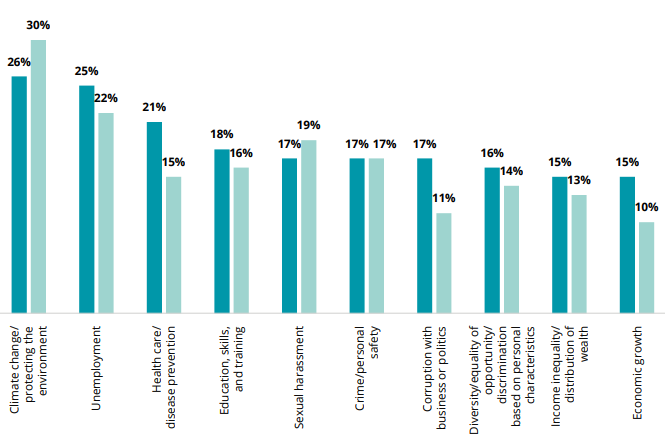
Source: Deloitte
In the US, analysts have been scratching their heads at a disconnect between 8.4 million unemployed and 10 million job openings, with radical differences in sectors such as professional and business services or education and health services.
Most answers focus on the realities of the “Corona times”. People who were forced to work remotely discovered that they enjoyed it. They left inflexible jobs for more flexible ones – or just to spend more time with the family.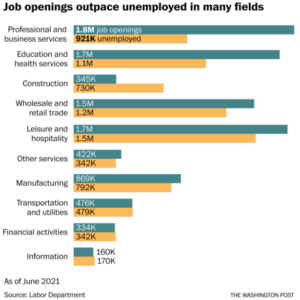
At the same time, childcare insecurity made it compulsory for some parents to give up their jobs to be home for children whose schools or care centers were closed in lockdown.
Workers in retail and hospitality, who saw their jobs being threatened, again and again, by COVID-19. Many were furloughed or sent into unemployment. While out of work, unemployment benefits allowed people to reconsider career paths – and many decided to move to more secure industries.
And, finally, workers whose jobs are not threatened fall prey to burnout during intense work-from-home bouts during long and/or repeated lockdown periods.
If companies have trouble filling positions, they might consider offering more flexibility. Another study by Gartner shows that, at least theoretically, employers and employees are aligned in seeing flexibility as critical to the organization. This includes as a top consideration the ability to work both from home and from the office, as well as somewhat flexible work times.
Yes, work-from-home will outlast COVID-19. At the same time, the concept of happynomics – the economics of personal happiness and well-being – is being transposed at work, with more corporate care for productivity through employee workplace satisfaction. It is by now quite clear that, the happier people are at work, the better the organizational outcomes.
***
Five challenges, each of them compounded by the prolonged uncertainty of COVID-19 and by looming political tensions in various hotspots around the world. Businesses large and small are already critically affected by all. No business will be spared from at least one of the 5 factors; many will be impacted by several or all.
In 2022, companies must be ready to pivot, change strategies, and adjust course mid-route. That doesn’t mean the first step shouldn’t be, always and most critically, planning for these 5 challenges. Dwight Eisenhower was right: Plans are worthless, but planning is everything.